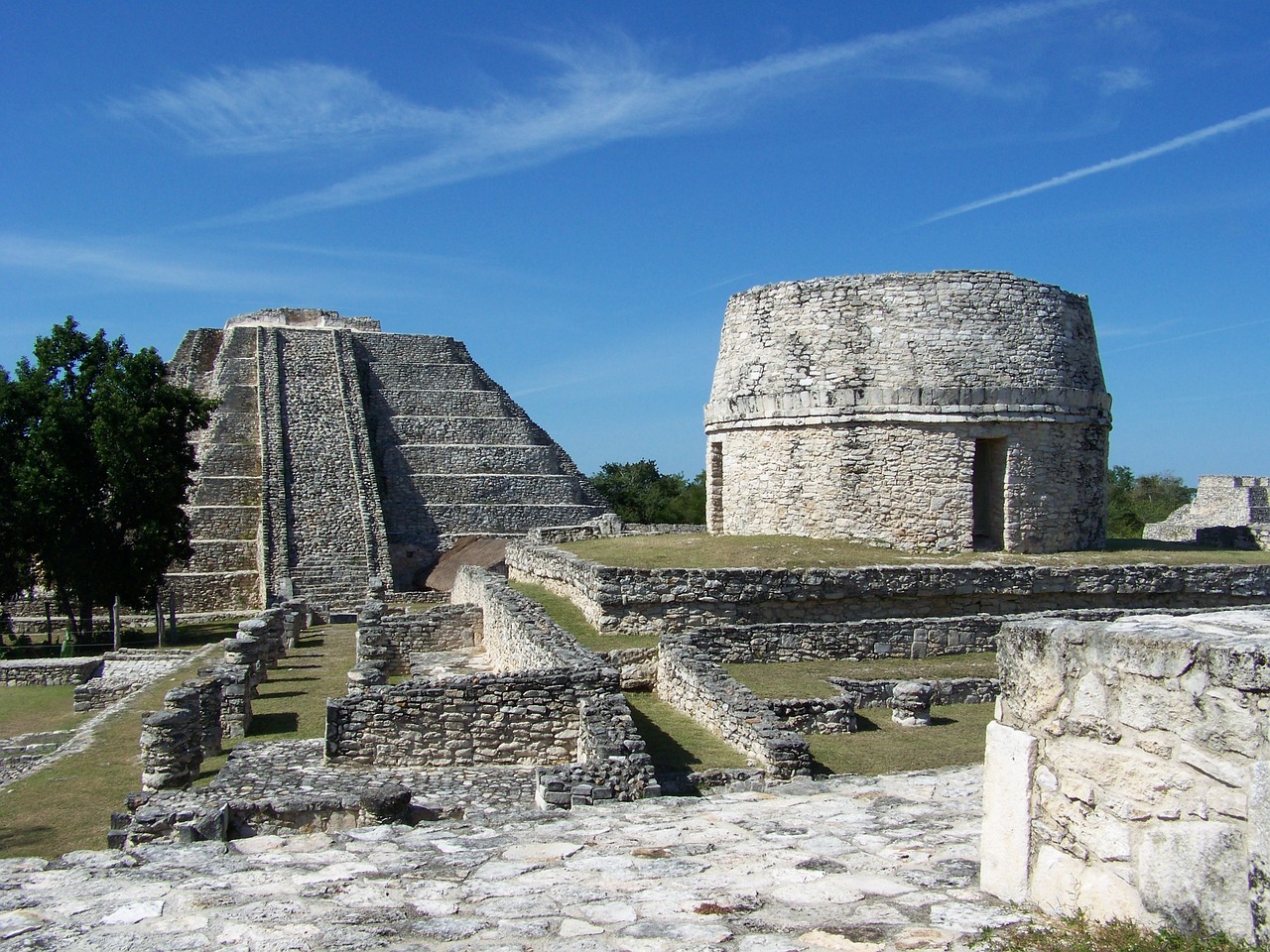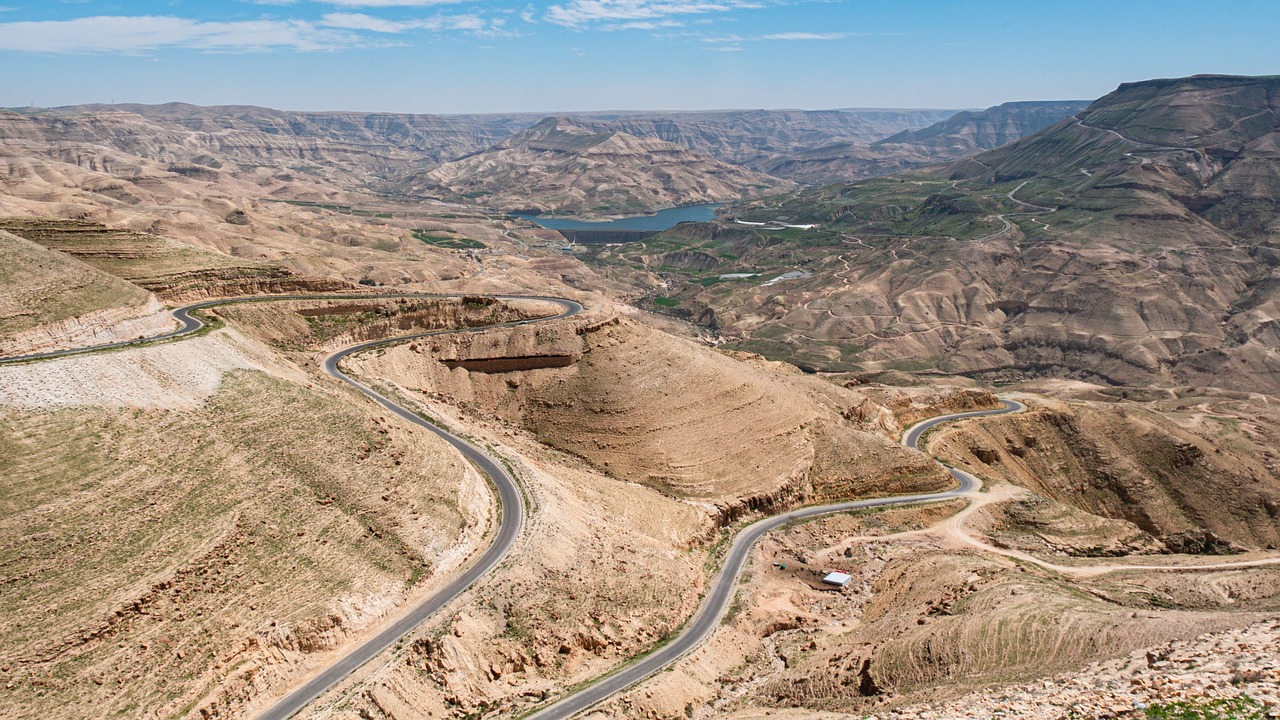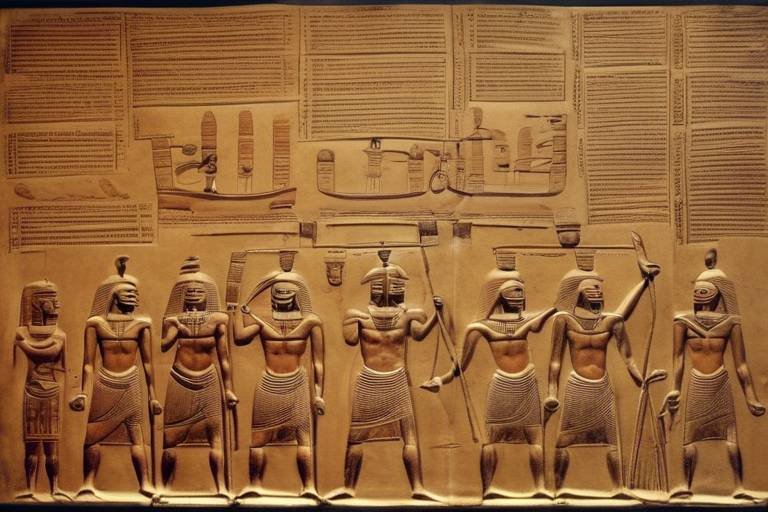The Secrets of Ancient Civilizations' Trade Systems
When delving into the mysteries of ancient civilizations, one cannot overlook the intricate trade systems that connected distant lands and cultures. These trade networks were the lifeblood of ancient societies, enabling the exchange of goods, ideas, and technologies that shaped the course of history. From the legendary Silk Road that bridged the East and West to the maritime trade routes of the Mediterranean civilizations, each ancient trade system held its own secrets waiting to be uncovered.
One of the most renowned trade routes in history, the Silk Road, not only facilitated the exchange of silk and other goods between China and the Mediterranean but also served as a conduit for the flow of ideas, religions, and cultures. The Phoenician maritime trade, on the other hand, showcased the seafaring skills of this ancient civilization as they navigated the Mediterranean, establishing trade colonies and spreading their influence far and wide.
Across the vast Sahara Desert, the trans-Saharan trade routes connected North Africa to sub-Saharan regions, enabling the exchange of gold, salt, and other commodities. Meanwhile, the Indus Valley trade network demonstrated the advanced commercial practices of this ancient civilization, engaging in trade with Mesopotamia and beyond.
The Mediterranean Sea, cradle of ancient civilizations like the Greeks and Romans, buzzed with maritime trade routes that fueled economic growth and cultural exchange. The Han Dynasty's tribute system in China, with its emphasis on diplomatic gifts and trade, played a crucial role in maintaining political stability and fostering relations with neighboring states.
In South America, the Inca road system stood as a testament to the engineering ingenuity of the Inca Empire, facilitating trade, communication, and administrative control over their vast territories. The Vikings, known for their seafaring exploits, established trade routes that spanned Europe, Asia, and even reached the shores of North America, leaving a lasting impact on medieval commerce.

The Silk Road
Exploring the fascinating trade networks and practices of ancient civilizations, shedding light on the methods and routes used for commerce and cultural exchange in antiquity.
The Silk Road stands as a testament to the interconnectedness of the ancient world, bridging the gap between the East and the West through a vast network of trade routes. Caravans laden with silk, spices, precious metals, and exotic goods traversed this historic path, creating a melting pot of cultures and ideas. The Silk Road not only facilitated the exchange of goods but also served as a conduit for the transmission of knowledge, technologies, and philosophies.
Stretching from China to the Mediterranean, the Silk Road was more than just a trade route; it was a corridor of innovation and discovery. Merchants, scholars, and adventurers embarked on perilous journeys, braving harsh climates and treacherous terrains in pursuit of wealth and enlightenment. The legacy of the Silk Road endures, echoing the resilience and ingenuity of ancient civilizations that dared to defy geographical barriers in search of prosperity.
At the heart of the Silk Road lay not only commerce but also cultural exchange. The blending of traditions, languages, and beliefs along this ancient highway gave rise to a rich tapestry of diversity. Ideas flowed like water, shaping the intellectual landscape of the ancient world and laying the groundwork for future civilizations to flourish.
Imagine the bustling markets, the vibrant bazaars, and the bustling caravanserais that dotted the Silk Road, each pulsating with the energy of trade and interaction. The Silk Road was more than a mere path; it was a lifeline connecting distant lands and disparate peoples, fostering a sense of unity amidst diversity.
The Silk Road, with its intricate web of routes and connections, remains a symbol of human ambition and resilience. It serves as a reminder of the boundless potential that lies in the exchange of goods, ideas, and cultures, transcending time and space to weave a narrative of shared history and mutual enrichment.

The Phoenician Maritime Trade
The Phoenicians, known for their remarkable seafaring skills and extensive maritime trade networks, played a significant role in shaping the ancient world's commerce. Sailing across the Mediterranean Sea, the Phoenician traders established colonies and ports, creating a vast network that connected the eastern and western Mediterranean regions. Their ships, equipped with advanced navigation techniques for the time, carried goods such as textiles, glassware, and precious metals, contributing to the flourishing trade in the ancient world.
One of the key aspects of Phoenician maritime trade was their establishment of trading posts and settlements along the coasts of the Mediterranean. These strategic locations served as hubs for the exchange of goods and cultural interactions between different civilizations. The Phoenicians' expertise in navigation allowed them to explore new territories, establish trade routes, and facilitate the flow of commodities across the sea.
Moreover, the Phoenicians were renowned for their production of purple dye extracted from the murex shellfish, a valuable commodity highly sought after in the ancient world. This unique product not only brought wealth to Phoenician merchants but also enhanced their reputation as skilled traders and artisans. The trade in purple dye further solidified the Phoenicians' position as key players in the maritime commerce of antiquity.
Through their maritime trade activities, the Phoenicians not only engaged in the exchange of goods but also played a crucial role in disseminating knowledge, technology, and cultural practices across the Mediterranean. Their voyages contributed to the transfer of ideas, languages, and artistic styles, fostering a rich tapestry of cultural diversity in the ancient world.
In conclusion, the Phoenician maritime trade stands as a testament to the ingenuity and enterprise of this ancient civilization. Their navigational prowess, strategic trade networks, and valuable commodities left a lasting impact on the development of commerce and cultural exchange in the ancient Mediterranean world.

The Trans-Saharan Trade Routes
Exploring the fascinating trade networks and practices of ancient civilizations, shedding light on the methods and routes used for commerce and cultural exchange in antiquity.
The Trans-Saharan Trade Routes were a complex network of paths that traversed the vast Sahara Desert, linking North Africa to the sub-Saharan regions. This system facilitated the exchange of goods, ideas, and culture between the diverse civilizations of the region.
Caravans of camels laden with valuable commodities such as gold, salt, ivory, and slaves navigated the harsh desert terrain, braving the scorching sun and shifting sands. These routes played a crucial role in connecting the Mediterranean world with West Africa, fostering economic prosperity and cultural interchange.
The trade routes were not merely conduits for commercial transactions but also served as avenues for the exchange of knowledge, technologies, and beliefs. Caravanserais, fortified rest stops along the way, provided shelter, sustenance, and protection for traders and travelers undertaking the arduous journey.
The Trans-Saharan Trade Routes were vital in the development of the transcontinental trade network, linking distant regions and fostering cross-cultural interactions. The flow of goods and ideas along these routes contributed to the enrichment and diversification of societies across Africa and beyond.

The Indus Valley Trade Network
Exploring the fascinating trade networks and practices of ancient civilizations, shedding light on the methods and routes used for commerce and cultural exchange in antiquity.
The Indus Valley civilization, known for its advanced urban planning and sophisticated trade practices, established a vast trade network that connected the region with Mesopotamia and other ancient societies. The Indus Valley Trade Network was characterized by the exchange of goods such as precious metals, gemstones, pottery, textiles, and agricultural products.
The cities of Mohenjo-Daro and Harappa served as major centers of trade, where merchants from different regions would converge to conduct business transactions. The Indus Valley people utilized seals as a form of early currency and to authenticate trade agreements, showcasing their organized approach to commerce.
This trade network facilitated cultural exchange and the spread of ideas, with influences from Mesopotamia and Central Asia shaping the art, architecture, and technological advancements of the Indus Valley civilization. The intricate trade routes also played a crucial role in the economic prosperity of the region, fostering growth and innovation.
Through the Indus Valley Trade Network, goods and knowledge flowed freely, creating a vibrant exchange that enriched the civilization and contributed to its flourishing economy. The legacy of this ancient trade system continues to fascinate historians and archaeologists, offering insights into the interconnectedness of early societies and the foundations of global trade.
1. What were the main goods traded in the Indus Valley Trade Network?
2. How did the trade routes of the Indus Valley civilization influence its economic development?
3. What role did seals play in the trade transactions of the ancient Indus Valley people?
4. How did the Indus Valley Trade Network contribute to cultural exchange and the spread of ideas?
5. What are some key archaeological findings that provide evidence of the trade practices of the Indus Valley civilization?

The Mediterranean Sea Trade
The Mediterranean Sea trade routes were vital arteries of commerce for ancient civilizations such as the Greeks and Romans. These maritime routes connected diverse regions around the Mediterranean basin, facilitating the exchange of goods, ideas, and culture. The sea served as a bustling highway where merchant ships laden with precious cargoes navigated the waters, linking ports and cities along the coastlines. The Mediterranean Sea trade not only boosted economic development but also fostered cross-cultural interactions and the spread of knowledge and technologies.

